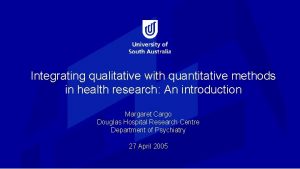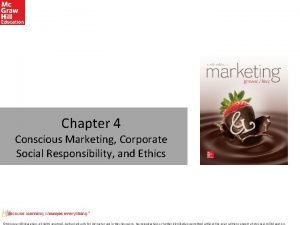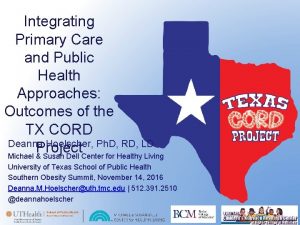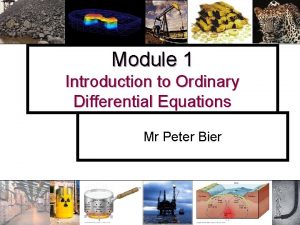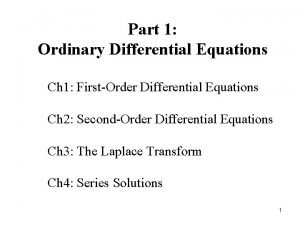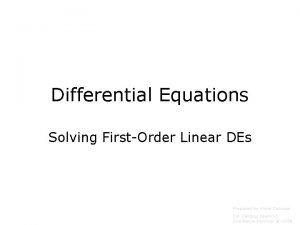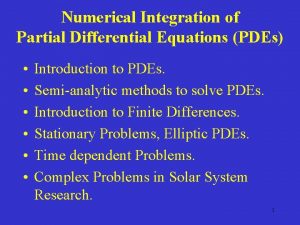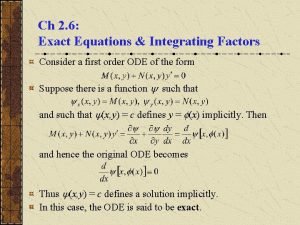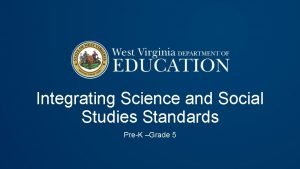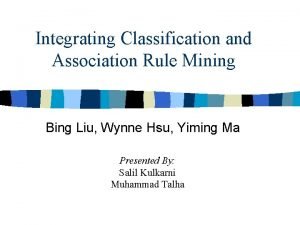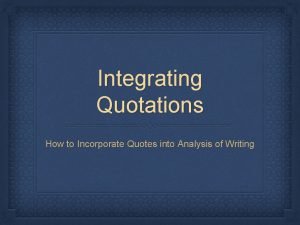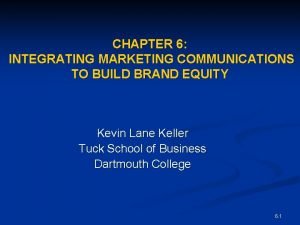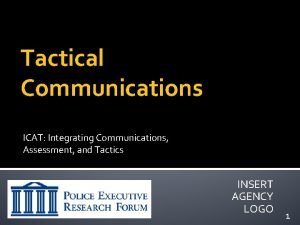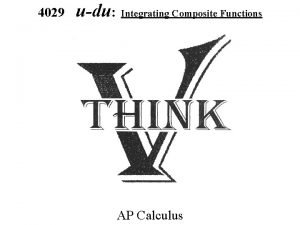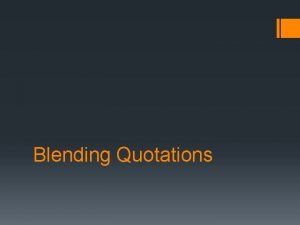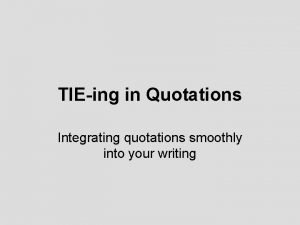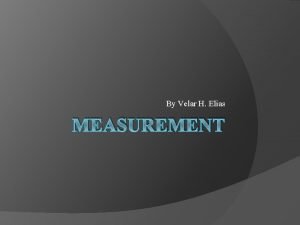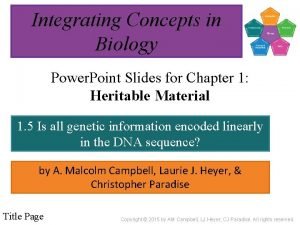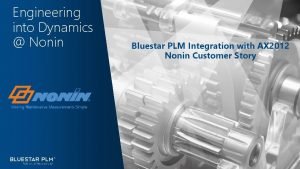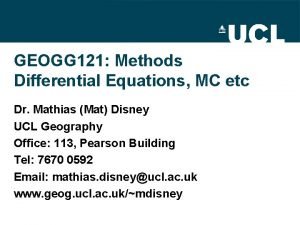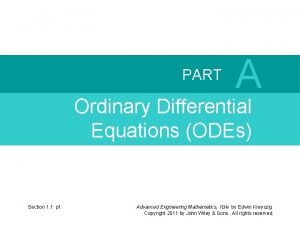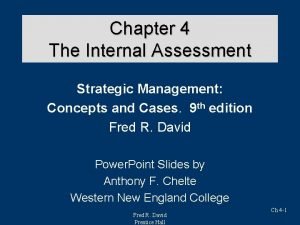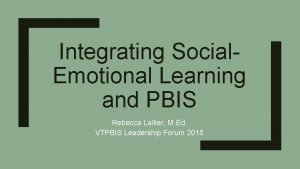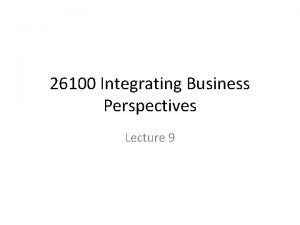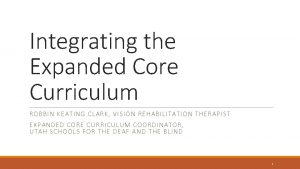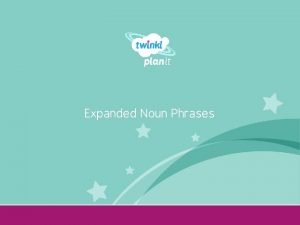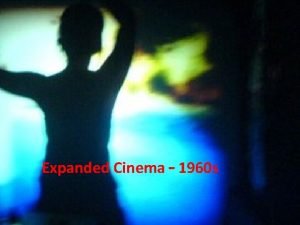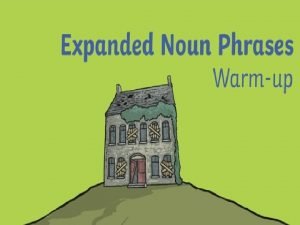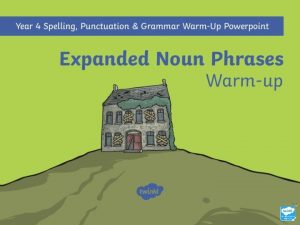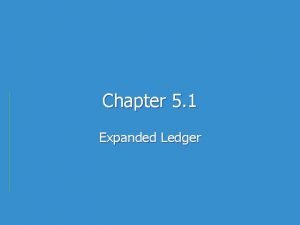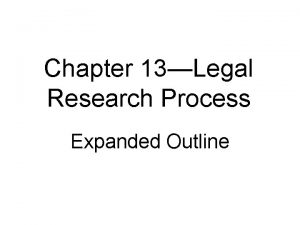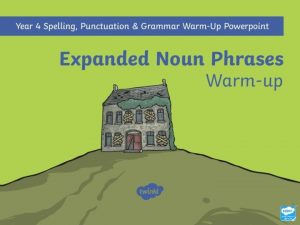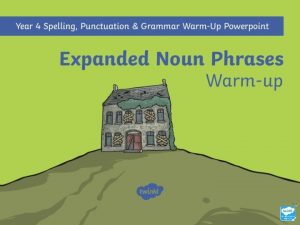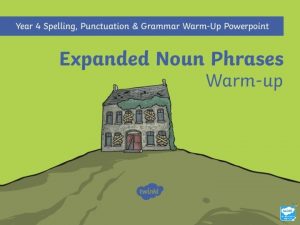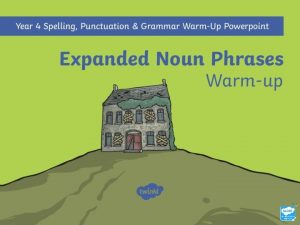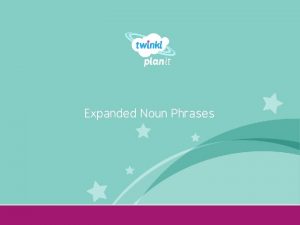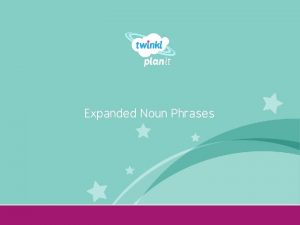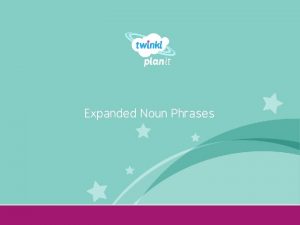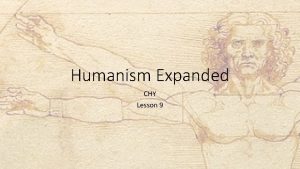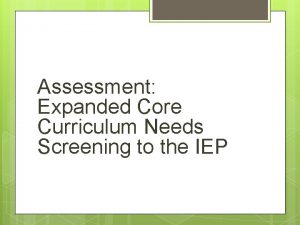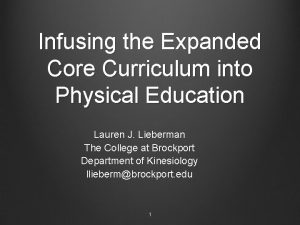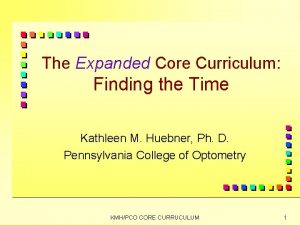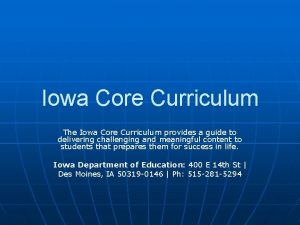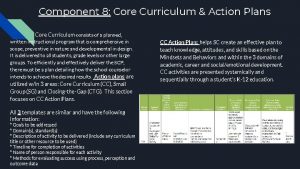Integrating the Core Curriculum the Expanded Core Curriculum




























- Slides: 28

Integrating the Core Curriculum & the Expanded Core Curriculum Sharon Zell Sacks, Ph. D Director of Curriculum, Assessment, & Staff Development California School for the Blind

Why Standards-based Curriculum? n Legislative Mandates n n n Elementary & Secondary Education Act: No Child Left Behind (2001) Individuals with Disabilities Education Act (2004) Evidence-based Student Outcomes n n Emphasis on assessment & formal testing Preparation for a technologically advanced society

Why the Expanded Core Curriculum n Students with visual impairments require a disability-specific-curriculum to develop skills in the following areas: n n n Independent travel (Orientation & Mobility) Use of specialized technology (Assistive Technology) Ability to interact with others & be a self-advocate (Social Skills/Self-Determination) Ability to take care of oneself (Activities of Daily Living) Preparation for work (Career Development) Knowledge of sports & leisure (Recreational Skills)

Barriers to the ECC n High Stakes Testing n Caseload Size & Time n Administrative push toward less direct service & more consultation

Commitment to the ECC n TVIs & O&Ms have knowledge of the ECC & view it as important n Families have moderate commitment. n n n Academic success is essential Families want support to teach the ECC Alternate ways to teach the ECC

AREAS OF THE EXPANDED CORE

Assistive Technology Computer Skills n Screen Readers n Scanners n Braille Note-Takers n Magnification Software n Using the Internet n Scientific Calculator & Math Software n

Career Development Career Awareness n Work Experience n Work Behaviors n Volunteer Work n Knowledge of Jobs & Job Skills n Work Alternatives n Department of Rehabilitation n

Compensatory Skills n Instruction in Braille Reading & Writing n Communication Skills n Instruction in Concept Development n Adaptations & Modifications to Academics

Daily Living Skills Personal Care n Dressing & Clothing n Personal Management n Money Manangement n Cooking n Cleaning & Home Management n

Orientation & Mobility n n n n n Body Concepts Orientation Skills Human Guide Travel in School Route Planning Neighborhood Travel Community Travel Public Transportation Paratransit Services

Recreation & Leisure Skills n n n n Develop of Play Skills Awareness of age-appropriate activities Board Games Hobbies Aerobic Activities Sports Community Recreation Computer Games & Social Networks

Self-Determination Awareness of self & Abilities n Understanding of visual impairment n Self-Advocacy Skills n

Sensory Efficiency Use of Functional Vision n Visual Perception Skills n Listening Skills n Auditory Awareness & Processing n Tactile Awareness n Use of Olfactory & Taste Senses n

Social Interaction Social Awareness skills n Social Interaction Skills n Development of Friendships & Social Relationships n Social Perspective Taking n Social Etiquette n

How to Integrate ECC with the Core n Assessment n Assistive Technology n Functional Vision Assessment of Learning Media n n Reading Assessments Mathematics Assessment

IEP Development Assessment drives IEP content n Group Process n Goals & objectives must be measureable & based on evidence-based outcomes n n n Progress monitoring Checklists Rubrics Work samples/ Portfolios

California Braille Reading & Math Standards n Structure of the Standards n n Content standard for reading, language arts, & mathematics Braille standard Alternative standard & activities for students with visual impairments & additional disabilities (taken from Special Education Administrators of County Offices of Education (SEACO) Curriculum CSB Activities: Additional Activities for students with visual impairments that allign with the ECC

Example of Grade 4 English Language Arts Standard n Comprehension & Analysis n 2. 3 Make and confirm predictions about text by using prior knowledge and ideas presented in the text itself, including illustrations, titles, topic sentences, important words, and foreshadowing clues. *

Braille Standard n Braille Standard Make and confirm predictions about text by using prior knowledge and ideas presented in the text itself, including illustrations (adapted) or transcriber's note, titles, topic sentences, important words, and foreshadowing clues.

Alternative Standard n n n SEACO Standard 8/9 - Follow one-step written instructions/ Follow two-step written instructions follow schedule(s) (FPI 8. 2/9. 2) follow community symbol directions (FPI 8. 3/9. 3) follow written or pictorial recipe (FPI 8. 5/9. 5)

CSB Activities n n CSB Activities Discuss multiple ways predictions are made through the use of textual materials. (Compensatory/Braille) After reading grade-level texts or literature, have student predict the conclusion of a story by using information gathered from the story. Encourage students to use clues from the title, the text itself, pictures, or transcriber's notes. (Compensatory/ /Braille) When reading news magazines or specific news articles, encourage students to predict the outcome of an issue by citing quotes from the text as a predictive indicator. (Compensatory)

More CSB Activities n During a current events activity, read and discuss newspaper articles. Encourage students to predict the outcome of the story by reviewing the title of the news story or from passages within the news story. (Compensatory) n Read and discuss work-related scenarios to students. Ask students to predict the outcome of the scenario by using the information from the story, or their own personal experiences. (Career/Vocational) n During an orientation and mobility lesson provide students with a set of directions to a spot on campus. Ask students to predict their destination through the use of context clues

Example of a Grade 7 Math Standard n Measurement and Geometry n 1. 0 Students choose appropriate units of measure and use ratios to convert within and between measurement systems to solve problems: n 1. 1 Compare weights, capacities, geometric measures, times, and temperatures within and between measurement systems (e. g. , miles per hour and feet per second, cubic inches to cubic centimeters).

Braille Standard n Using accepted Braille mathematics code and formatting and measurement and geometric materials designed for blind users, compare weights, capacities, geometric measures, times, and temperatures within and between measurement systems (e. g. , miles per hour and feet per second, cubic inches to cubic centimeters).

Alternative Standard n Standard 15 - Identify and describe common geometric objects. n relate shapes to common objects (i. e. , cone to ice cream cone; sphere to ball; cube to block (FPI 15. 4) n Stnadard 16 - Compare the length, width, and volume of two or more objects by using direct comparison or a non-standard unit.

CSB Activities n Have students keep track of the weather according to the time of day. Keep a log. (Compensatory/ADL) n Have students keep an individual log of their height and weight, and compare it to other peers or to charts of standard weight and heights by age and gender. (ADL/Recreation & Leisure) n Have students estimate the wight and measurements of a variety of objects and compare them. (ADL/Compensatory)

Solutions for Integrating the ECC n Collaboration with Special Purpose Schools or Programs n Clearing House for ECC Materials n Increased Emphasis in Pre-Service & Inservice Training n Training for School Administrators
 Integrating qualitative and quantitative methods
Integrating qualitative and quantitative methods When integrating conscious marketing
When integrating conscious marketing Integrating public health and primary care
Integrating public health and primary care Paragraph
Paragraph Integrating factor method
Integrating factor method Integrating factor
Integrating factor Knapps stages
Knapps stages Solution to it
Solution to it Integration of partial differential equation
Integration of partial differential equation Quote integration
Quote integration Project indicators enable a software project manager to
Project indicators enable a software project manager to Non exact differential equation calculator
Non exact differential equation calculator Integrating science and social studies
Integrating science and social studies Integrating classification and association rule mining
Integrating classification and association rule mining Integrating quotes
Integrating quotes Integrating marketing communication to build brand equity
Integrating marketing communication to build brand equity Tactical communication skills
Tactical communication skills Integration of composite function
Integration of composite function Blending quotations
Blending quotations Embedded quotes mla examples
Embedded quotes mla examples Integrating type dvm
Integrating type dvm Integrating concepts in biology
Integrating concepts in biology Microsoft dynamics plm
Microsoft dynamics plm Seperation of variables
Seperation of variables Integrating factor
Integrating factor Key internal forces
Key internal forces Integrating sel and pbis
Integrating sel and pbis Integrating business perspectives
Integrating business perspectives Fascicle
Fascicle
